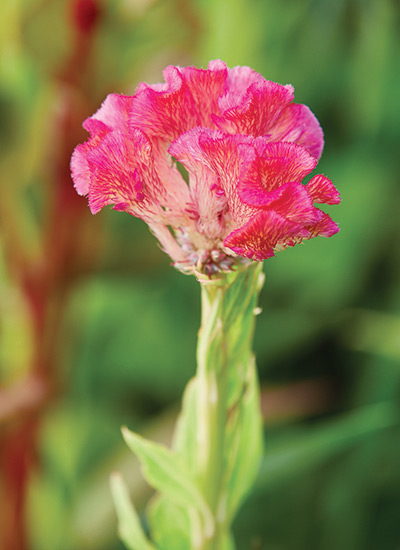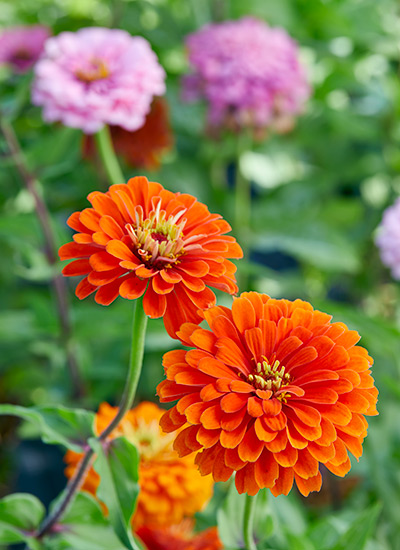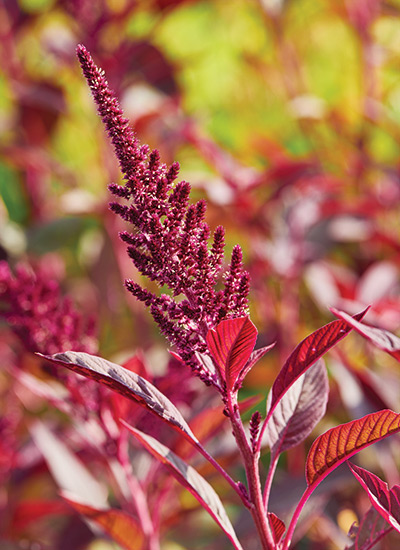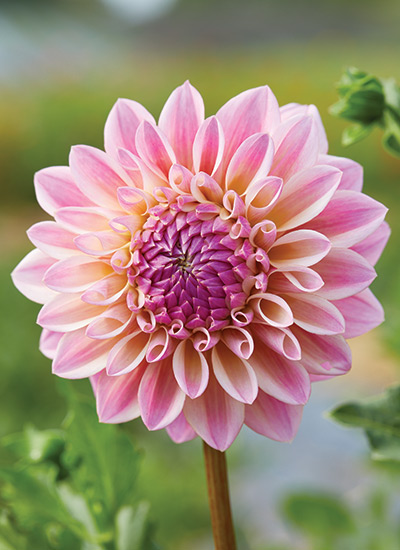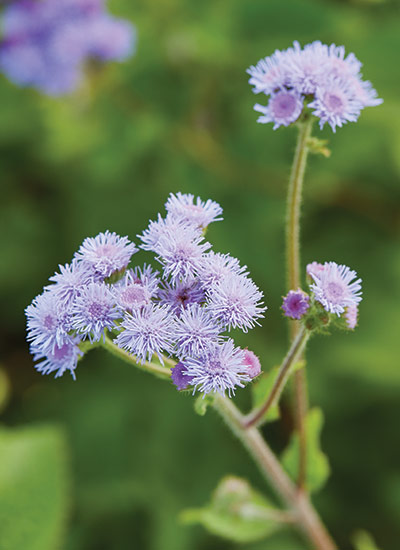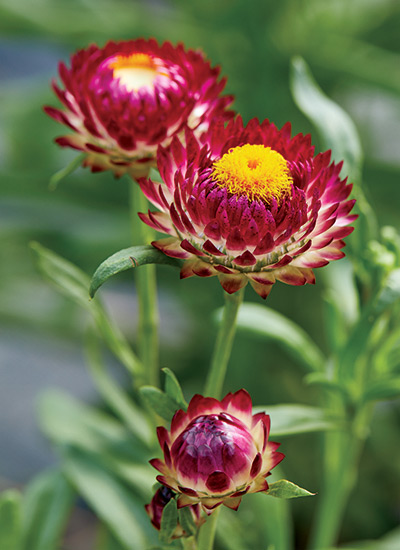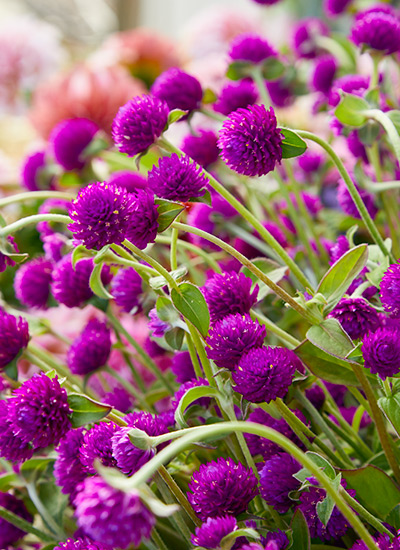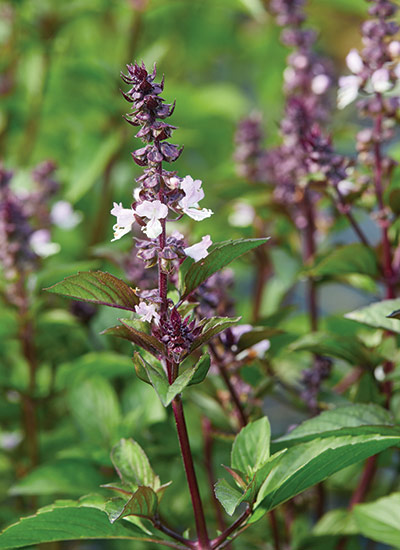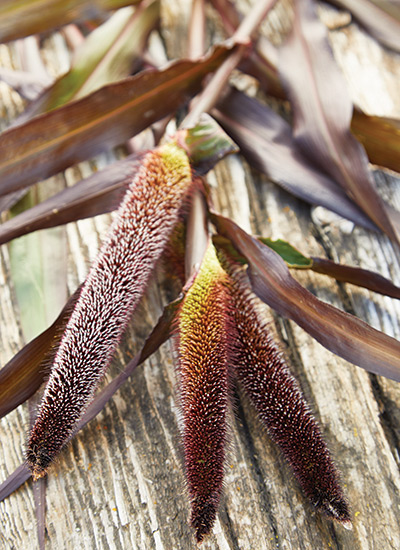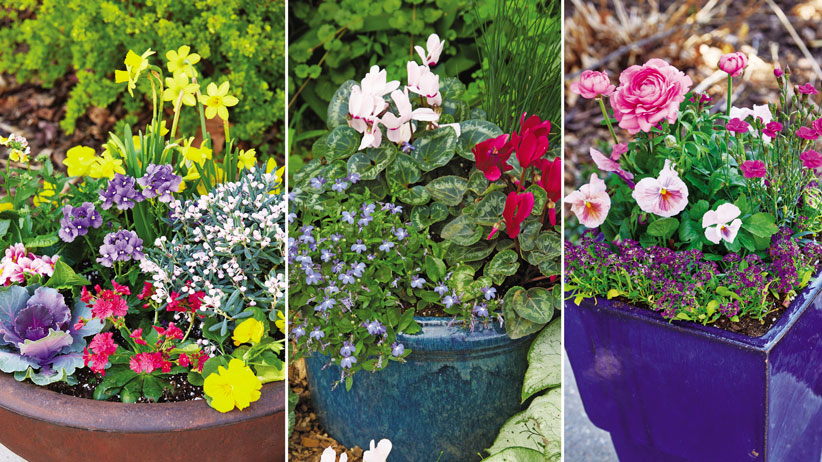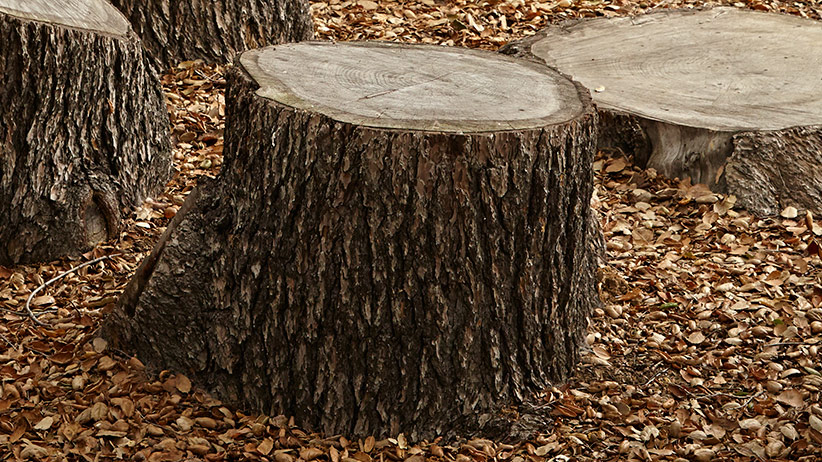
Find joy in growing a cut flower garden
The simple joy of planting a patch of flowers to cut and fashion into a posy is undeniable. For Jennifer and Adam O’Neal, owners of PepperHarrow flower farm in Iowa, growing cut flowers is a way of life. They grow all of their botanical ingredients themselves, from early blooming anemones to late-season dahlias, on six acres in Winterset, Iowa (including a half-acre of lavender and another half-acre of sunflowers). Their tips can help you convert just a few square feet of neglected garden space into a bouquet factory.
Natural inspiration
“We want to inspire people to use what they have growing around them to create beauty,” says Jennifer, a lifelong gardener who as a girl helped her grandmother create arrangements to compete in the county fair. “We grow hundreds of flower species each season. But you don’t have to have a massive garden to be able to appreciate the beauty of nature up close and personal.”
Adam is originally from Louisiana and grew up playing in his backyard, the swamps of a nature preserve. He is devoted to sustainable flower farming and has a designer’s mindset when it comes to selecting which flowers to grow. Because they never stop growing or planting flowers to have throughout the season, their beds transition during the year. “In the spring,” says Adam, “we’ll start with gorgeous ranunculus and will end up taking them out in late June and planting something else like cosmos for either midseason or fall bloom. Our flower gardens are incredibly dynamic.”
Take a cue from this green-hearted couple and expand your garden to include both annuals and perennials for cutting and beautiful bouquets.
You Might Also Like:
Cottage Garden Charm
Pollinator Garden Plant Pairings
Edible Flowers to Grow in Your Garden
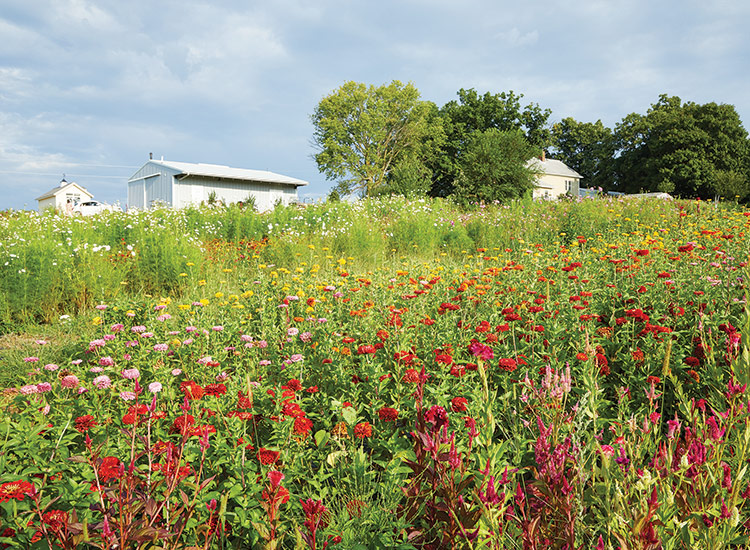
Grow, harvest & arrange your own cut flowers
For a gardener to grow enough flowers to have beautiful bouquets all season long, Adam and Jennifer suggest starting with a 10×10-foot plot. “In that space you can grow a nice mix of flowers with staggered bloom times,” Adam says.
Growing a cut flower garden
Their larger bed above gets two plantings of zinnias every year. They start the first set of seeds indoors four weeks before the last frost date. “Next,” says Adam, “start another round about two weeks after the last frost date, then plant those out once the first crop of zinnias starts to get powdery mildew.” Same space, but two crops of flowers in the same season. “Focus on easy annuals with pretty pops of color,” Jennifer says. She suggests starting with zinnias, celosia, globe amaranth and lisianthus.
For those short on space, Adam recommends incorporating cut flowers into existing beds and borders. Perennial candidates for cutting include salvia, veronica and coneflowers. If you don’t like to cut flowers from spots you can see from the house, consider those spaces where you could grow a few cutting plants out of sight, like behind the garage or along the sides of the house. Or do as gardeners have done for generations and grow them alongside edibles in the vegetable patch.
Be sure to feed your flowers
Annuals grown for cutting will benefit from additional feeding. Besides the annual addition of well-rotted compost to help replace depleted nutrients, Adam and Jennifer suggest applying a mild fertilizer, such as organic fish emulsion, at planting time as well as feeding with compost tea throughout the season.
Seed Sources for Cut Flower Garden:
- Botanical Interests
- Johnny's Selected Seeds
- Renee's Garden
- Swallowtail Garden Seeds
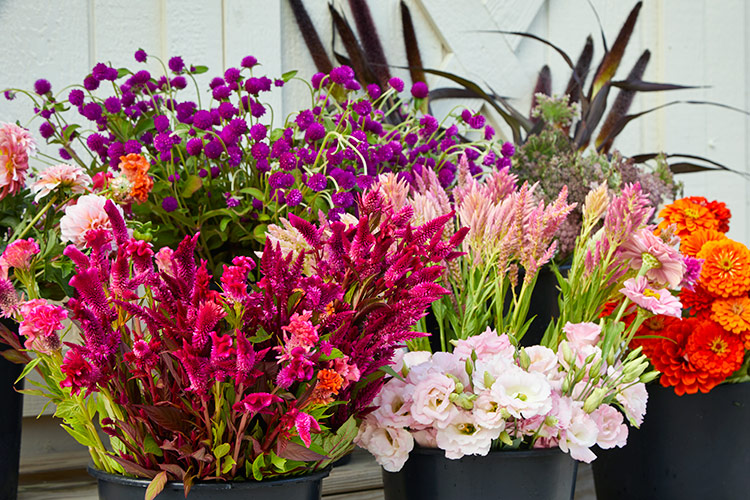
Tips for harvesting cut flowers
If you can’t cut flowers early in the morning, do so late in the afternoon or evening. Jennifer typically cuts the stems at least 18 inches long, if possible, and later cuts them to the size of the bouquet.
“We always cut our flowers at a 45-degree angle to allow the flower to take up water easily,” she says. “We also always look to cut at a junction of a branch, which will promote additional growth and blooms on the plant.”

Cut flower tips
- To tell if it's time to cut a zinnia, grasp the stem between your fingers and give it a good wiggle. If it flops, it's not ready. If it remains stiff and erect, it's time to cut.
- Harvest flowers in the morning (after the dew has dried) or evening, not during the heat of the day.
- Cut low on each stem to obtain long, sturdy stems.
- Slanted cuts will keep stems from lying flat on the bucket bottom and increase water uptake.
- Adam and Jennifer place just-harvested flowers directly into buckets of water and allow them to rest for 24 hours in a cool place before they recut and arrange.
- They like to add a chlorine-based tablet, such as CVBN Tabs (available online and at floral supply stores) to each bucket at the same time to kill bacteria and prolong the life of the flowers.
- Strip off any leaves that will fall below the water line in the arrangement. If left on, they will decompose, creating an unpleasant odor and fouling the water with bacteria.
You Might Also Like:
5 Old-Fashioned Flowers
How to Grow Dahlias
Mix & Match Guide to Create Your Own Cottage Garden
10 Great plants for a cut flower garden
Create a cutting garden with these colorful varieties to keep your vases full all season long. Most of these (with the exception of the dahlia) can be grown from seed, which allows you to grow the varieties that are difficult to find at local nurseries. You can also find most of these types of flowers at the garden centers in the growing season.



